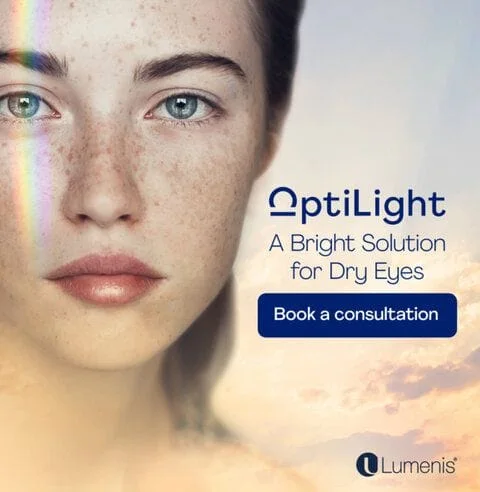Dry Eyes

Dry eye disease is becoming increasingly common, affecting millions of people worldwide. This chronic condition can significantly impact your life, sometimes making even the smallest of tasks seem difficult.
If you have eye pain, blurry vision, and dry or watery eyes, it could be a sign that you have dry eye disease. But don’t worry! With an in-depth eye exam, our team can assess your vision and eye health to get you the treatment you need.
Sometimes your eyes don’t make enough tears or the tears evaporate too fast because they don’t have the right amount of compounds in them. This is called dry eye. Individuals who wear contact lenses or have undergone LASIK or other types of refractive surgery commonly complain of dry eye. The condition is more common in women and is more common and severe in older persons.
Dry eye may occur by itself, or the surface of the eye may be inflamed at the same time. This condition can make it harder for you to carry out certain activities such as reading for long periods or looking at a computer screen. You may also be less comfortable in dry environments.
Mild cases of dry eye may go away on their own. However, if dry eye persists and goes untreated, it can cause ulcers or scars on the surface of the eye (cornea). This can be painful and may lead to some vision loss. Permanent loss of vision from dry eye, though, is uncommon.
Symptoms of Dry Eye
Dry eye can lead to different symptoms, including:
● A burning or scratchy sensation in your eyes
● Stringy mucus in or around your eyes
● Irritated or overly-watery eyes
● Sensitivity to light or photophobia
● Eye redness, blurred vision, or eye fatigue
● A sensation of having something in your eyes
● Difficulty wearing contact lenses
If you are experiencing any of these symptoms, book an appointment with your eye doctor to receive a dry eye disease diagnosis and get the treatment you need
Treatments for Dry Eye
Several treatments are available to relieve symptoms of dry eye, including:
- Intense Pulsed Light (IPL) treatment- OptiLight by Lumenis
- Anti-inflammatory medication such as cyclosporine or short-term use of corticosteroid eye drops
- Dietary changes or supplements, such as adding omega-3 fatty acids to your diet
- Plugging the tear ducts to keep the tears from flowing away, either temporarily or permanently
Please see our IPL FAQ sheet for more information
For more information about treating dry eye or about dry eye in general, contact us today.
